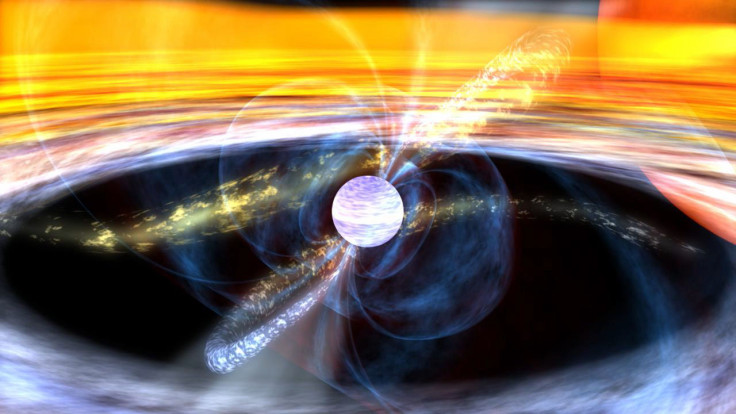Nasa will launch first ever neutron star mission via SpaceX's Falcon 9 rocket
The mission will involve conducting experiments aboard the ISS that might help boost future human exploration to distant space bodies.

Nasa is all set to launch its first ever neutron-star mission, nearly 50 years after British astrophysicist Jocelyn Bell first discovered their existence. Nasa's Neutron Star Interior Composition Explorer, or NICER, will be flown to the ISS (International Space Station) aboard SpaceX's Falcon 9 rocket, which is slated to be launched into space later today (3 June).
Nasa's NICER, while aboard the ISS, will conduct experiments to determine neutron stars' measurements. NICER will also "for the first time in space," conduct tests on technology that relies on pulsars as navigation beacons, which may help boost future human exploration missions to distant space bodies.
"During its 18-month mission, NICER will collect X-rays generated from the stars' tremendously strong magnetic fields and from hotspots located at their two magnetic poles," Nasa said in a statement. "At these locations, the objects' intense magnetic fields emerge from their surfaces and particles trapped within these fields rain down and generate X-rays when they strike the stars' surfaces."
What are neutron stars?
Neutron stars are the remnants of massive stars, which, after their nuclear fuel was depleted, "exploded and collapsed" into giant spheres, roughly the size of New York City. Neutron stars' intense gravity makes them play host to "incredibly dense matter not seen anywhere else in the universe." According to Nasa, neutron stars can crush matter, upto "1.4 times the content of the sun or at least 460,000 Earths."
To provide some perspective – just one teaspoon of neutron star matter would weigh a whopping billion tons on Earth.
"The nature of matter under these conditions is a decades-old unsolved problem," said Keith Gendreau, a scientist at NASA's Goddard Space Flight Center. "Theory has advanced a host of models to describe the physics governing the interiors of neutron stars. With NICER, we can finally test these theories with precise observations."
NICER a multipurpose mission
NICER is a multipurpose mission, as it will also "carry out the world's first demonstration of X-ray navigation in space".
"In an experiment called the Station Explorer for X-ray Timing and Navigation Technology, or SEXTANT, the team will use NICER's telescopes to detect X-ray light emitted within the pulsars' sweeping beams of radiation to estimate the arrival times of the pulses. With these measurements, the team will use specially developed algorithms to stitch together an onboard navigational solution," Nasa said.
The space agency said that such a navigational device on an interplanetary mission would potentially be able to autonomously calculate its location, independent of Nasa's Deep Space Network.
"Our primary goal is science," Gendreau said. "But we can use the same pulsar measurements to demonstrate X-ray navigation. It's rare that we scientists get to develop a multi-purpose experiment such as this one. It's all coming together."
"This is a very interesting experiment that we're doing on the space station," Gendreau added. "We've had a lot of great support from the science and space technology folks at NASA Headquarters. They have helped us advance the technologies that make NICER possible as well as those that NICER will demonstrate. The mission is blazing trails on several different levels."
© Copyright IBTimes 2024. All rights reserved.






